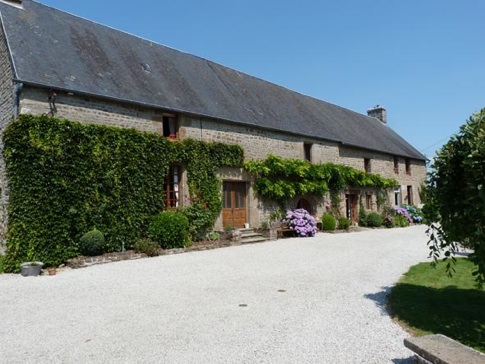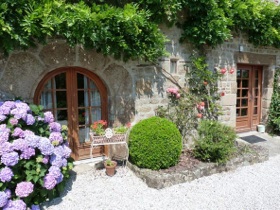



There has been a farming community in this tiny Norman hamlet since Roman times. The original Farmhouse and some of the outbuildings were built around 1650 when La Mancellière became a large farm and dairy. It has provided milk, cheese, eggs and dairy products for the local community and farmer’s markets for more than three centuries.
La Mancellière is separated into two gites: the Farmhouse Cottage and the Old Dairy. In the past, The Old Dairy, which would have been open to the rafters, was the old milking parlour and dairy, churning out tons of Normandy butter and cheese. The Farmhouse Cottage would have served as a communal living area for farmers and their cattle. If you look outside in the grounds, the tin-roofed garage and the building covered in ramblers by the paddock, used to be the old bread ovens and bake-houses where all the hamlet’s hot food and bread were prepared.
Following the French revolution, French peasants revolted against the Crown and the Church and raided local abbeys and chateaux for stone to use in their homes. The large stones over the front door of the Farmhouse are believed to originate from the abbey at Savigny le Vieux, about five miles from here. If you look closely when driving around the area, particularly in St. Symphorien, you will see farmhouses with similar ‘borrowed’ stones. The beams throughout the building are also original and would have been salvaged from ships, possibly as early as the mid 1700s.
During the Second World War, Buais was under German occupation and the school in the village served as strategic headquarters for the Nazis. On June 6th 1944, when the Allies made their historic Normandy landings, La Mancellière was deep behind enemy lines. In August 1944, St. Hilaire du Harcouët and Mortain became so-called ‘martyr’ towns and were destroyed almost entirely by American shells as the Germans fought to hold off the Allied invasion. Both towns were decimated by fire and bombs but the victory belonged to the Allies as the Germans were pushed out of Manche and Normandy was finally liberated.
La Mancellière has seen her fair share of war, occupation, revolution and hardship over the centuries but the fertile land and warm summers have been constant, providing an abundance of food and generous harvests for the farmers. We hope to continue reaping the rewards of this wonderful soil by rebuilding and replanting the orchards and vegetable plots and gradually re-introducing animals back to La Mancellière. Our hope is that she will still have tales to tell and secrets to keep for another 350 years.

Site Map:




